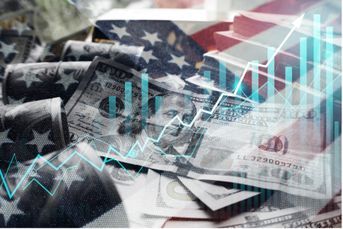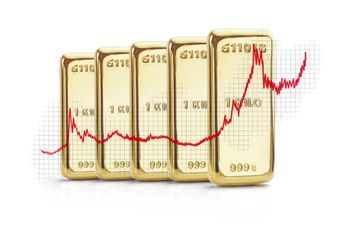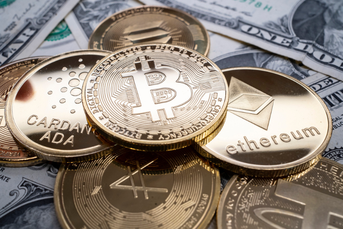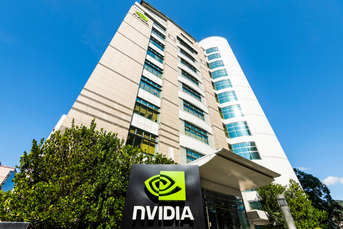DOL fiduciary rule, along with two other regs, could be a boon for ETFs
Passive investments, already eating away at active managers' assets, are getting another boost.
Three rules will make exchange-traded funds more accessible to new types of investors. In the U.S., the fiduciary duty and new insurance guidelines will enable retirement savers and insurers to raise their exposure to ETFs. In Europe, the Markets in Financial Instruments Directive II is expected to increase flows from retail investors.
FIDUCIARY RULE
A boon for people saving for retirement is expected to lift ETFs. The fiduciary rule that took partial effect in June and is designed to improve the quality of investment advice could help more than triple U.S. ETF assets to $10 trillion over the next five years, according to the Bank of New York Mellon Corp.
The U.S. Department of Labor requires financial advisers to act in the best interests of their retired clients—as fiduciaries, in other words—and to disclose any commissions paid to the advisers by investment funds.
Already, because of the rule, many financial advisers are ditching commission-based business models. “The best non-self-serving approach is a flat fee, so ETFs are a nice way to roll that out,” says Denise Valentine, a senior analyst at consulting firm Aite Group.
The rule was supposed to kick in in April, but President Donald J. Trump intervened. Some parts took effect in June, with others likely postponed until July 2019.
One way or another, says Jeff McCarthy, CEO of ETFs at BNY Mellon, ETFs will be beneficiaries. “It may end up being implemented in slight variations, but the rule and the extended debate around the rule still benefit ETFs,” he says. “It increases awareness.”
NAIC GUIDELINES
New regulatory guidelines for insurers in the U.S. will allow them to jump into ETFs. BlackRock estimates that $300 billion could move into debt products alone over the next five years.
BlackRock worked with the National Association of Insurance Commissioners in Washington for four years to create an accounting treatment—the so-called systematic value method—that allows insurers to measure ETFs based on underlying cash flows of the securities.
“Up until recently, the treatment of ETFs by the NAIC was harsh,” says Mike Siegel, who oversees $239 billion of insurers’ funds at Goldman Sachs Group Inc. Starting next year, these guidelines will help insurers account for ETFs similar to the way they account for bonds. Previous accounting guidelines treated the ETFs as if they were akin to equity funds.
It will take time to implement. ETF issuers must get each fund approved by the NAIC before it’s implemented. Because cash flows of bonds are more straightforward than those of ETFs, says Deutsche Bank AG’s Michael Earley, whose company oversees $190 billion worth of insurers’ funds, “you’ll have a harder time convincing your actuaries that a 30-year ETF is a perfect replacement for a 30-year bond.”
MIFID II
The European Union’s MiFID II requires greater transparency in the commission-based advisory model. By exposing the true costs of actively managed funds, this new set of rules could drive cost-conscious retail investors, who account for 15 percent to 20 percent of the market, into the arms of lower-cost ETFs.Changes may not show up immediately when MiFID II takes effect on Jan. 3.
Tom Bartolacci, head of European ETF capital markets at Vanguard Group, says it will take time for investors to digest the newly reported information before we see significant flows: “Maybe it’s not a meaningful spike in trading volume or inflows in January, but that’s a step to building a foundation for an ETF industry that will serve all investors.”
Because of MiFID II, says Thomas Meyer zu Drewer, global head of ComStage ETFs, which is part of Commerzbank AG, investors will be able to compare an insurance contract with an ETF. “You can see what the costs are, such as rebates or kickbacks, as, all of a sudden, financial advisers have to inform their clients that they are getting a commission for the insurance product,” he says. The change, which kicks in on Jan. 3., will likely push European fund assets from $725 billion to $1 trillion by 2020-21, zu Drewer says.
But that’s not all. U.S.-traded ETFs may benefit more than European ETFs because the former are less opaque than the latter. In Europe’s ETF market, where 70 percent of securities are traded over the counter, MiFID II will require companies to report details of their transactions, such as price and trade volume data. Edde covers asset management at Bloomberg News in London. Evans covers ETFs and Basak covers insurance in New York.
Learn more about reprints and licensing for this article.








